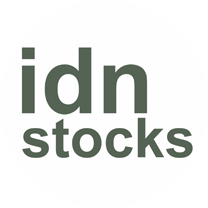Kalbe Farma Rebounding With The IDR Appreciation vs USD
As it imports 95% of its raw material in USD, Kalbe is the primary beneficiary of the strengthening IDR vs USD. This is evidenced by the QoQ margin expansion in 1Q16. Consumer health and nutritionals are its key growth drivers as the two divisions contribute c.45% of its total sales. Its liquid milk manufacturing plant would commence operations mid-year to manufacture ready-to-drink format of its leading powdered milk products (Diabetasol, Prenagen, Morinaga). Maintain BUY with a IDR1,600 TP (16% upside), implying 34x and 29x 2016F and 2017F P/Es respectively.
Margin expansion in consumer health and nutritionals divisions
As Kalbe Farma (Kalbe) benefits from the IDR appreciation vs USD, we observe 370bps and 240bps QoQ margin expansions in its consumer health (contributing c.18% of Kalbe’s total sales) and nutritionals (contributing c.28% of Kalbe’s total sales) divisions. With an improved Indonesian economy in 1Q16, Kalbe raised 2-3% ASP of its over the counter (OTC) drug prices (contributing 70% of consumer health division’s sales) last month and the sales volume is still holding up post the price increase.
Prescription pharmaceuticals division
We also observed 100bps gross QoQ margin expansion from the appreciation of IDR vs USD in the prescription pharmaceuticals division. Kalbe can alter its product mix for the Indonesian universal healthcare programme (BPJS) sales tender, ie Kalbe can target a better mix of the BPJS’ sales proportion of the non-negotiable unbranded generic drugs with its higher-margin cancer treatment drugs. As Kalbe is the only local firm able to produce such cancer treatment drugs, it has pricing power over BPJS.
Maintain BUY
Indonesia’s pharmaceutical expenditure/capita at c.USD25 is the lowest in ASEAN. A recent government policy allowing 100% foreign ownership in upstream/raw material pharmaceutical sector would also help it in the medium term, as it can reduce its raw material imports. Key downside risk is the weakening IDR vs USD, as Kalbe imports 95% of its raw materials.

